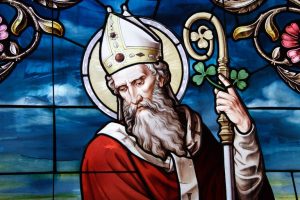Saint Patrick’s Day and the driving away of the serpents from Ireland

The story goes that serpents attacked Patrick during a 40 day fast he was undertaking on top of a hill. So, he chased all the serpents of Ireland into the sea with his staff. Of course, all evidence suggests that there were no literal snakes in Ireland long before Patrick arrived in 432AD. This is a weak attempt to connect Patrick with Moses and Aaron’s battle against Pharaoh’s magi in Exo 7:8-13. Many sources interpret this as a metaphor regarding Patrick driving paganism out of Ireland. But let’s consider, what did Patrick really do?
…Saint Patrick’s Day and the driving away of the serpents from IrelandRead More »